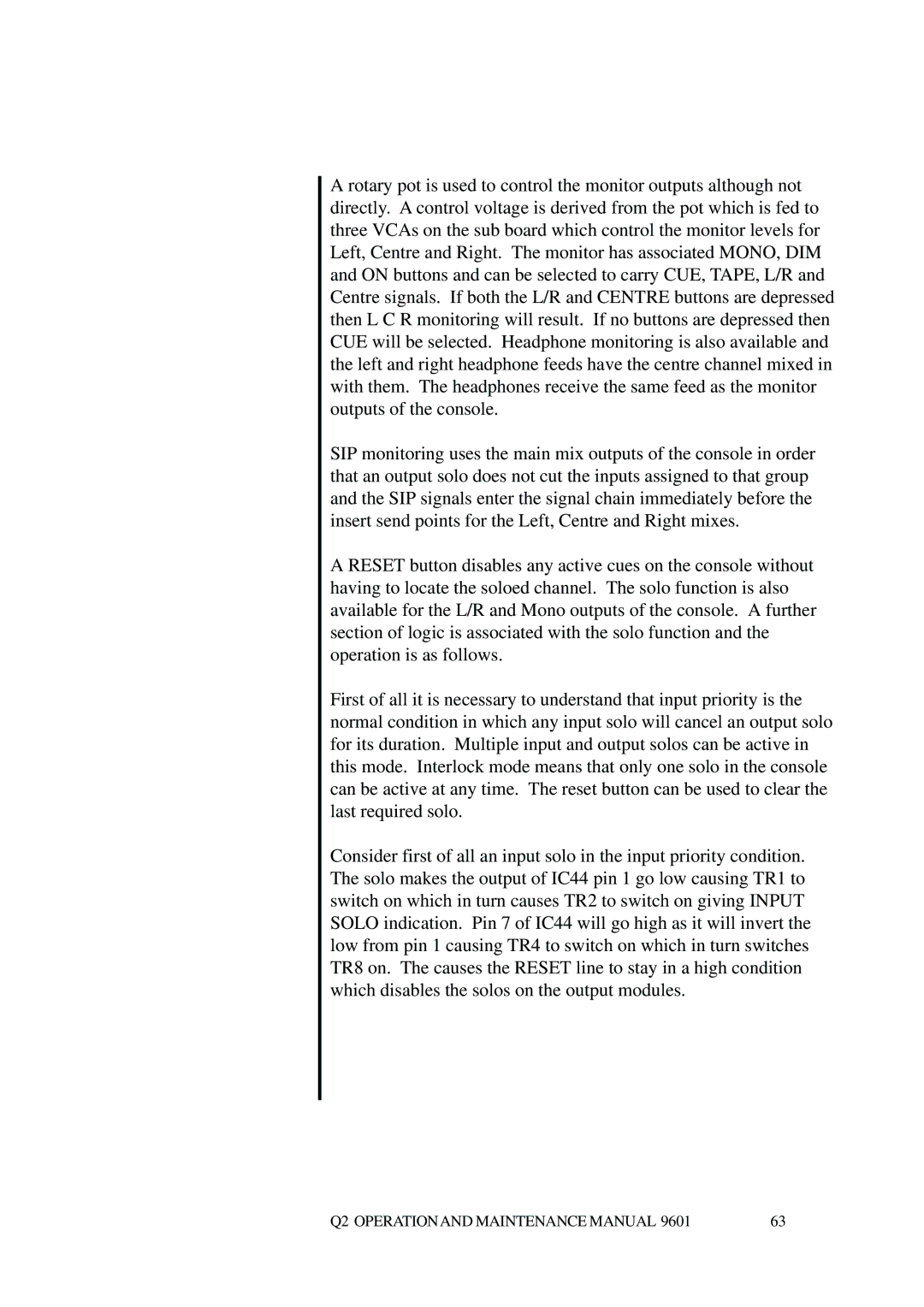A rotary pot is used to control the monitor outputs although not directly. A control voltage is derived from the pot which is fed to three VCAs on the sub board which control the monitor levels for Left, Centre and Right. The monitor has associated MONO, DIM and ON buttons and can be selected to carry CUE, TAPE, L/R and Centre signals. If both the L/R and CENTRE buttons are depressed then L C R monitoring will result. If no buttons are depressed then CUE will be selected. Headphone monitoring is also available and the left and right headphone feeds have the centre channel mixed in with them. The headphones receive the same feed as the monitor outputs of the console.
SIP monitoring uses the main mix outputs of the console in order that an output solo does not cut the inputs assigned to that group and the SIP signals enter the signal chain immediately before the insert send points for the Left, Centre and Right mixes.
A RESET button disables any active cues on the console without having to locate the soloed channel. The solo function is also available for the L/R and Mono outputs of the console. A further section of logic is associated with the solo function and the operation is as follows.
First of all it is necessary to understand that input priority is the normal condition in which any input solo will cancel an output solo for its duration. Multiple input and output solos can be active in this mode. Interlock mode means that only one solo in the console can be active at any time. The reset button can be used to clear the last required solo.
Consider first of all an input solo in the input priority condition. The solo makes the output of IC44 pin 1 go low causing TR1 to switch on which in turn causes TR2 to switch on giving INPUT SOLO indication. Pin 7 of IC44 will go high as it will invert the low from pin 1 causing TR4 to switch on which in turn switches TR8 on. The causes the RESET line to stay in a high condition which disables the solos on the output modules.
Q2 OPERATIONAND MAINTENANCE MANUAL 9601 | 63 |
